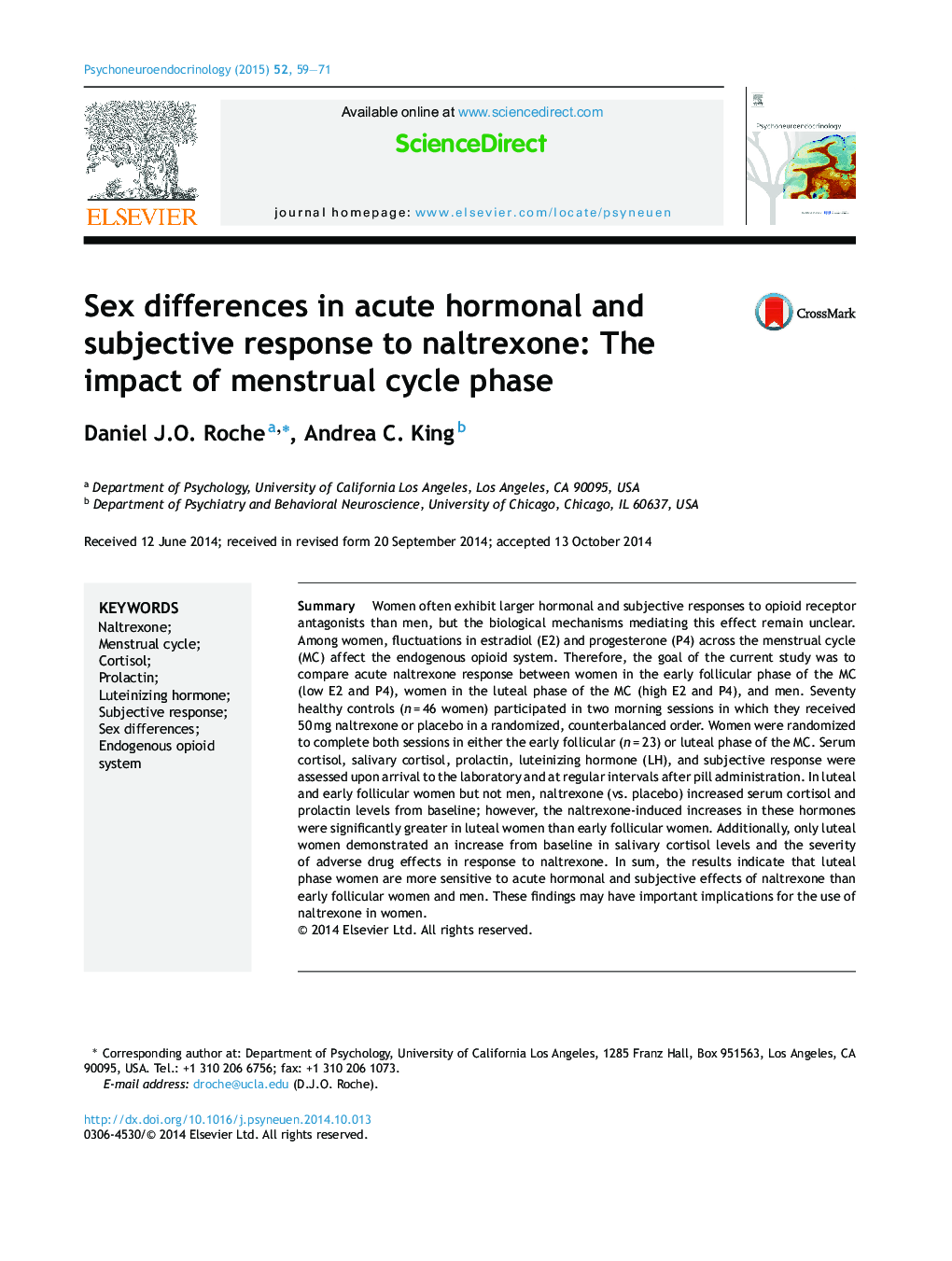| Article ID | Journal | Published Year | Pages | File Type |
|---|---|---|---|---|
| 6819211 | Psychoneuroendocrinology | 2015 | 13 Pages |
Abstract
Women often exhibit larger hormonal and subjective responses to opioid receptor antagonists than men, but the biological mechanisms mediating this effect remain unclear. Among women, fluctuations in estradiol (E2) and progesterone (P4) across the menstrual cycle (MC) affect the endogenous opioid system. Therefore, the goal of the current study was to compare acute naltrexone response between women in the early follicular phase of the MC (low E2 and P4), women in the luteal phase of the MC (high E2 and P4), and men. Seventy healthy controls (n = 46 women) participated in two morning sessions in which they received 50 mg naltrexone or placebo in a randomized, counterbalanced order. Women were randomized to complete both sessions in either the early follicular (n = 23) or luteal phase of the MC. Serum cortisol, salivary cortisol, prolactin, luteinizing hormone (LH), and subjective response were assessed upon arrival to the laboratory and at regular intervals after pill administration. In luteal and early follicular women but not men, naltrexone (vs. placebo) increased serum cortisol and prolactin levels from baseline; however, the naltrexone-induced increases in these hormones were significantly greater in luteal women than early follicular women. Additionally, only luteal women demonstrated an increase from baseline in salivary cortisol levels and the severity of adverse drug effects in response to naltrexone. In sum, the results indicate that luteal phase women are more sensitive to acute hormonal and subjective effects of naltrexone than early follicular women and men. These findings may have important implications for the use of naltrexone in women.
Keywords
Related Topics
Life Sciences
Biochemistry, Genetics and Molecular Biology
Endocrinology
Authors
Daniel J.O. Roche, Andrea C. King,
